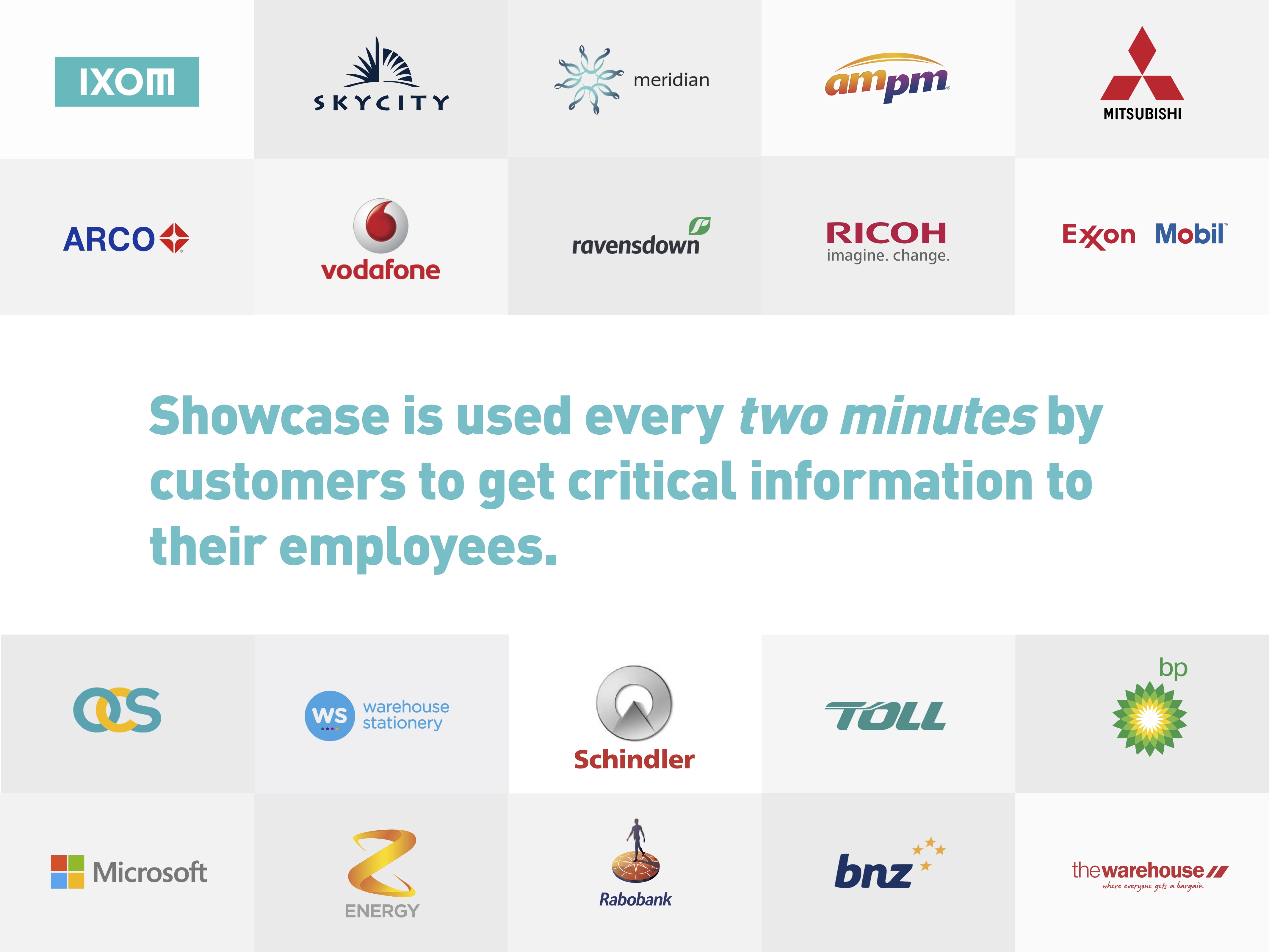A graphic designer, the founder of a small communications agency, a health and wellness expert, and an independent freight-forwarder walk into a bar…
Actually, they walked into our office.
Separately.
And they wanted some insight on selling to large and enterprise companies.
No, that’s not the beginning of a terribly sad business joke. It’s what happened after Showcase Workshop started landing accounts with larger companies. People wanted to know how our small business manages to sell our products and services to companies 50, 100, and in one case 1,083 times larger than Showcase is!*
Working with these bigger companies presents different kinds of challenges to a small business versus working with other small businesses - but they were nothing we couldn’t handle. In fact, those challenges brought our team together in remarkable ways.
And the benefits we experienced from overcoming those barriers and opening our doors to these “big fish” were nothing short of incredible.
So it was no wonder, really, that other small-business owners I knew wanted to pick my brain about selling to large and enterprise companies.
Over the holidays, between pulling weeds in my garden and doing quality control on my husband's martini creations, something dawned on me. If my friends and family want to know about working with bigger companies, maybe there are more people out there feeling in the dark about this subject.
Maybe there are more people who know that working with large companies could be rewarding, lucrative and really great for their business's reputation — but they just don’t know what to expect or even where to begin.
Maybe more people could benefit from my experience and the lessons I took away.
Thus was born the idea for my next e-book: Small Fish, Big Fish: A small-business guide to selling to large and enterprise companies.
Let’s talk about what makes large and enterprise companies different, and how your small business might benefit from working with them.
Large and Enterprise Businesses Defined
Though there are many schools of thought, I belong to this one:
Large businesses have 250-1,000 employees.
Enterprise businesses have more than 1,000 employees.
There are a few important differences between the two — and I will get more specific about those in later posts — but there are a lot more similarities. So for the sake of this article series (and future e-book), unless otherwise noted, we’re talking about any business with more than 250 employees.
Once a company gets above 250 employees, a lot changes… for the company and for those of us who want to sell our products and services to them.
Business Relationships Are Longer and Broader

When your customers are individual entrepreneurs or other small businesses, your business relationship is generally limited to one person. If they suddenly go out of business, determine they can get your services better/cheaper/faster somewhere else, or decide to "go in another direction," that signals the end of your business relationship with them.
When you work with larger companies, you may still have one point of contact, but your work impacts a number of people inside the organization. Your contact’s colleagues, their boss, their boss’s boss — many people know who you are and benefit from your product or service.
This benefits your small business in myriad ways.
-
If your point of contact leaves the company, that doesn’t mean that account is dead in the water. In many cases, you can continue working with the company and build a new relationship with your former point-of-contact’s replacement.
-
Your former point-of-contact might want to continue the relationship with you at their new organization or company. Not only is it flattering when a former contact brings you with them to their new role, but you’re walking into the new account with a glowing referral.
-
If a change is coming down the pike, you’ll see it coming from a mile away. Enterprise companies are nothing if not careful, long-term planners.
The pace of change is actually one of the biggest distinctions between small businesses and large or enterprise companies.
Think of a larger company as a freight carrier, while a small business is a jet ski.
A larger company — like a freight carrier — takes time to turn. It can’t change course quickly. In fact, once it’s in route, it rarely changes course. If your relationship with the company is going to change, you’ll likely know it well in advance. Of course, once that change is underway, there’s nothing you can do to stop it…but at least you’ve got plenty of time to get out of the way of that big ship!
A small business, on the other hand, can change their course on a whim. Like a jet ski, they can and do turn on a dime. That’s part of the joy! But it can also be part of the frustration if you’re a vendor.
Visibility and Prestige Are Easier to Achieve
Not everyone cares about winning awards and gaining popularity (or fame!) — but there’s no shame if you do. And if you do, large and enterprise companies offer more opportunities to get your name out there with more prestigious, highly visible projects.
Beyond a little ego-boosting, however, working on prestigious, highly visible projects has the added benefit of improving your reputation and building your authority. It’s a compound effect: The more prestigious projects you work on, the more you have to show other companies - large and small - that are looking for someone to help with their projects.
At Showcase, we have a slide in our customer presentation we call the “NASCAR slide.” Right now, it looks like this:

That slide is our pride and joy. It always gives us a boost of confidence when we see it. And it impresses the pants off prospective clients when we tell them how these well-known brands use our product.
Let’s Face It: Bigger Companies Have Bigger Budgets, Too
You might have heard that bigger organizations pay more for the exact same services. That’s not always true. Or at least, that’s not the full truth.
Sometimes large organizations pay more for services — but they always have bigger expectations to go along with it.
Here’s something that’s almost always true, though: Bigger companies have bigger budgets for more volume.
Want to Shift from Selling to Small Businesses to Selling to Large and Enterprise Companies?
You’re in good company. It can be a very smart move for a small business with a product or service that fills a genuine need for these types of customers.
But jumping in head-first might not be the smartest way to approach things. A little planning goes a long way.
The rest of this article series will take you step-by-step through our process of finding, qualifying, understanding, building a relationship with and selling to big customers.
You can also get the series as a free e-book: Small Fish, Big Fish: A small-business guide to selling to large and enterprise companies.
Read the next article in the Small Fish, Big Fish series: 3 Steps to Choose and Qualify Your Large and Enterprise Leads
*Based on number of employees.